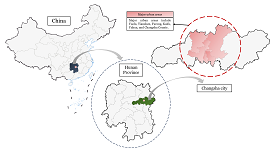
Asia Pacific Academy of Science Pte. Ltd. (APACSCI) specializes in international journal publishing. APACSCI adopts the open access publishing model and provides an important communication bridge for academic groups whose interest fields include engineering, technology, medicine, computer, mathematics, agriculture and forestry, and environment.

As China's pillar industry, the property market has suffered a considerable impact in recent years, with a decline in turnover and many developers at risk of bankruptcy. As one of the most concerned factors for stakeholders, housing prices need to be predicted more objectively and accurately to minimize decision-making errors by developers and consumers. Many prediction models in recent years have been unfriendly to consumers due to technical difficulties, high data demand, and varying factors affecting house prices in different regions. A uniform model across the country cannot capture local differences accurately, so this study compares and analyses the fitting effects of multiple machine learning models using February 2024 new building data in Changsha as an example, aiming to provide consumers with a simple and practical reference for prediction methods. The modeling exploration applies several regression techniques based on machine learning algorithms, such as Stepwise regression, Robust regression, Lasso regression, Ridge regression, Ordinary Least Squares (OLS) regression, Extreme Gradient Boosted regression (XGBoost), and Random Forest (RF) regression. These algorithms are used to construct forecasting models, and the best-performing model is selected by conducting a comparative analysis of the forecasting errors obtained between these models. The research found that machine learning is a practical approach to property price prediction, with least squares regression and Lasso regression providing relatively more convincing results.
@theconversation.com THE CANADIAN PRESS/Frank Gunn Planting more trees in urban environments is a simple, affordable and effective way to improve health. THE CANADIAN PRESS/Frank Gunn
Keeping people in cities healthy, especially in poorer neighbourhoods, is challenging. One simple, effective and scientifically proven prescription for better health is planting more trees. The idea of planting more trees in urban environments is so simple, affordable and effective that it’s hard to understand why we aren’t applying it more urgently, especially with mountains of evidence to show how much good trees can do. Environmental epidemiologist Mark J. Nieuwenhuijsen provided an easy way to remember how important they are: the 3-30-300 rule, which suggests that for optimal health, everyone should be able to see at least three trees from home, live under a neighbourhood canopy of at least 30 per cent tree cover and within 300 metres of a green space of at least one hectare.
Source from: https://theconversation.com/bringing-forests-to-the-city-10-ways-planting-trees-improves-health-in-urban-centres-233629 |

Prof. Mehmet Cetin
Kastamonu University,
Turkey
Polish Scientific Bibliography


